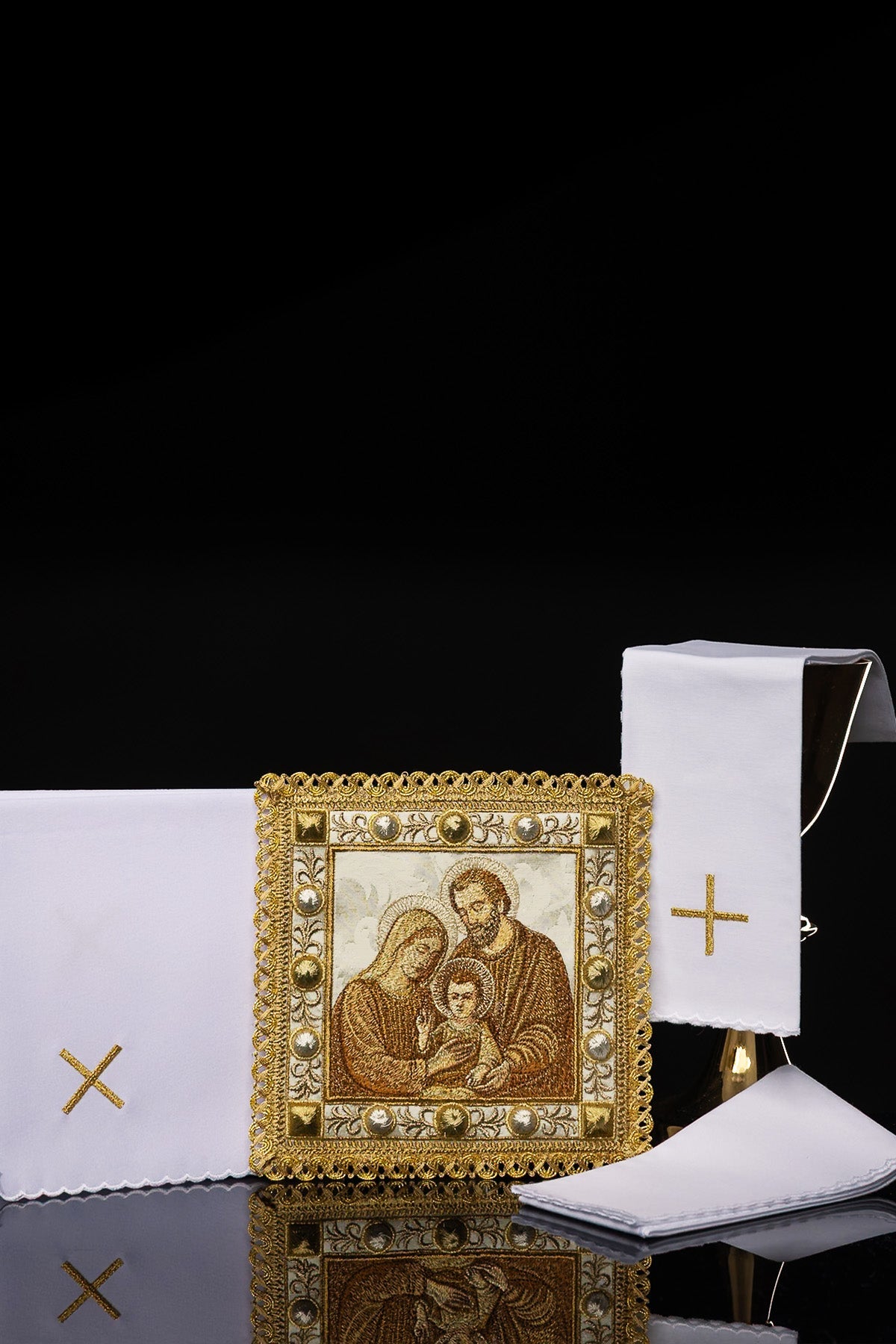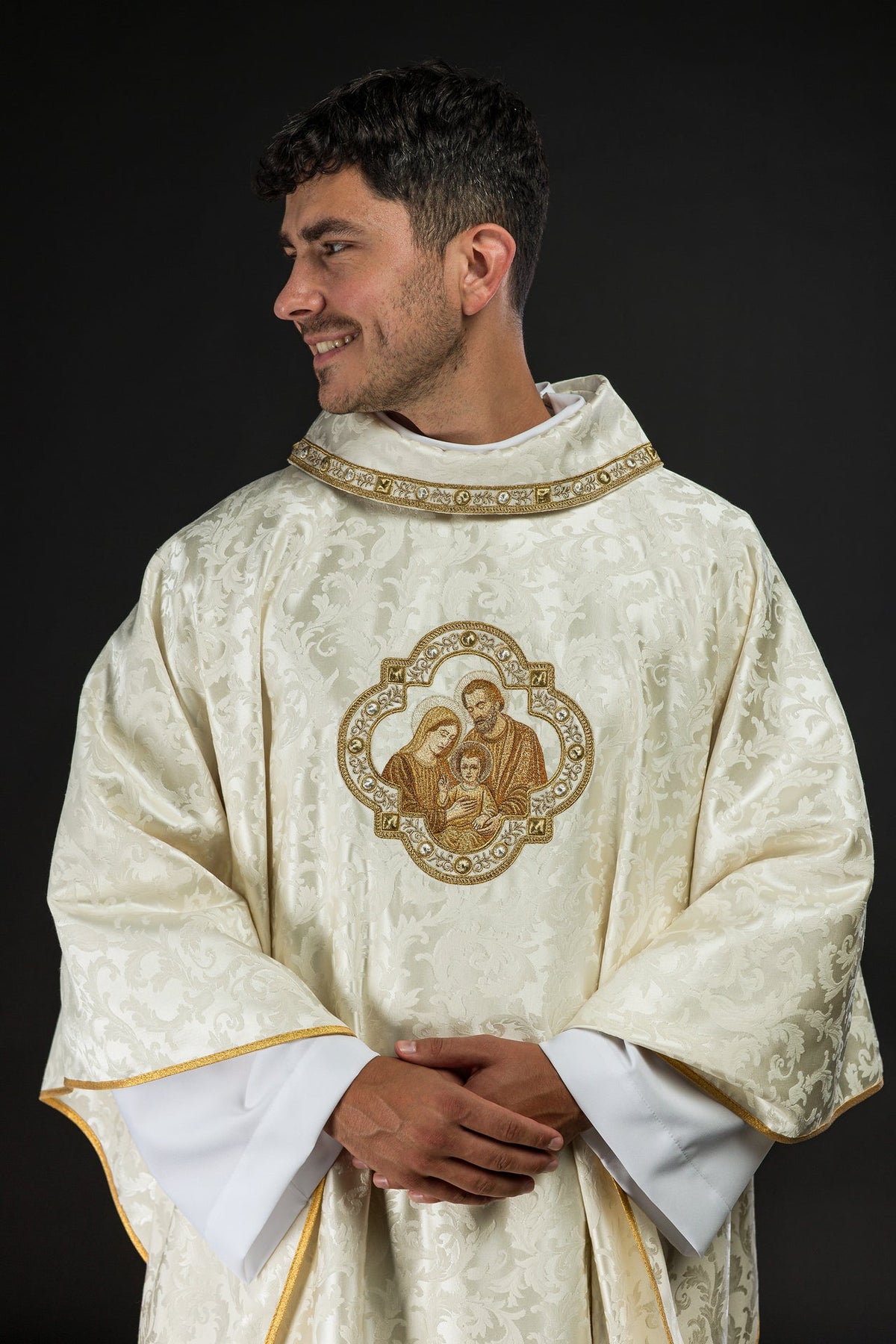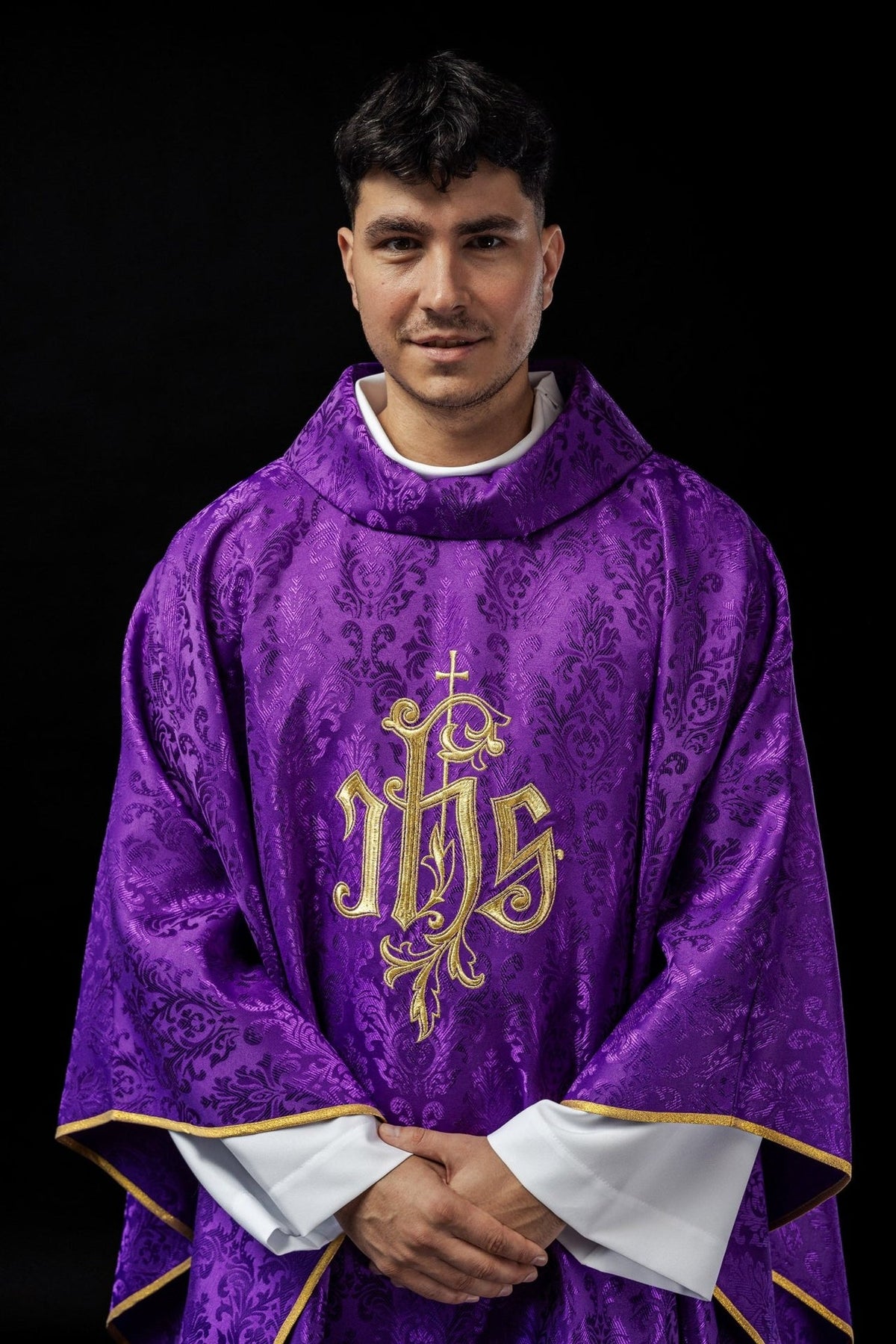Embroidered liturgical vestments in the Catholic liturgy
The Catholic liturgy conceals a long series of elements that are of some importance both functionally and purely stylistically. In particular, one must focus on two basic factors, such as vestments and colors. Both must be used in certain liturgies and ceremonies, and have significance both for those who belong to the clergy in the first person, and for all the faithful. In particular, the Catholic liturgy contains a sizable list of sacred vestments that should not be missing at certain points in church life. Also known as liturgical vestments, which correspond to the simple garments used in church celebrations. Throughout the history of the Church, the most commonly used are, for example: alb, chasuble, surplice, mitre, stole, liturgical vestment, path or veil.
The main colors of liturgical vestments
Of great importance are the colors in the Catholic liturgy, which vary according to the period of the year in which they are used by Church representatives. Among them, the most important are:
- purple, is used during Advent and Lent, in addition to Holy Saturday, the Day of Atonement and the commemoration of the dead,
- red, is used on Palm Sunday, Good Friday, the day of Pentecost, the commemoration of martyrs, the celebration of the Passion of Christ and Confirmation,
- green is used on all Sundays belonging to ordinary time and is therefore the most frequently used color of all.
- white, is the color of vestments on Christmas and Easter, the feast of All Saints, the celebration of the Mother of God and the Lord, and the sacraments of Baptism, Eucharist, Anointing of the Sick and marriage,
- black, can sometimes be used in funeral Masses and in memory of the dead,
- gold, can replace all other colors except purple and black, and emphasizes the importance of various festive celebrations.
Colors in the Catholic liturgy and their significance
The liturgical vestments of Catholic priests in the religious celebrations they use vary in a range of colors, which have a well-defined symbolic meaning. The colors of liturgical vestments, such as the cope, chasuble, dalmatics and stole, refer to the liturgical period or the current feast. The liturgical colors used were introduced by the will of Paul VI in the Roman rite in 1969 and are four: white, green, red and purple. To these colors are added others, such as pink, blue, gold and black, used in liturgical vestments only on special occasions or as an alternative to the canonical colors. What the colors symbolize, such as:
- white - signifies joy and purity resulting from the Faith. It is one of the most common colors in the embroidered liturgical vestments that priests use on a daily basis, regardless of the liturgical time and the current feast;
- green - most often used at Sunday masses and on weekdays, except on specific feasts. Green, is a symbol of hope, constancy and persistent listening. It accompanies the daily journey of priests and the faithful who address them;
- purple - brings to mind penance, expectation and mourning. Purple liturgical vestments characterize Masses for the dead, in which they can be replaced by black.
- red - symbolizes the passion of Christ and the martyrdom blood shed by Him and the saints.
As for other colors, for example, blue is used primarily for the celebration of the Blessed Virgin Mary, especially in countries of Spanish or Portuguese culture, pink signifies the joy and solemnity of the third Sunday of Advent and the fourth Sunday of Lent, while, finally, gold symbolizes royalty and can replace all colors for any occasion, although it is usually used only for certain celebrations of special significance.
Liturgical year and time
One often hears about the liturgical year and times of the Catholic Church. Each liturgical season provides for different theological content in the context of ceremonies and liturgies, in the colors of celebrations, in the passages of Scripture read at Mass. Each liturgical season requires an attitude of predisposition of faith and heart on the part of the believer, which changes according to the feasts designated for the period, the moment in the life of Jesus or the saints celebrated there. There is a time of expectation and a time of fulfillment, and this statement is truer than ever in the cycles and cycles of the liturgical year, repeated for centuries, involving all Christians. Meanwhile, we can say that the liturgical year celebrates and renews the life of Jesus spread throughout the year. The heart of the liturgical year is the Paschal Triduum, which recalls the passion, death and resurrection of Jesus. The liturgical year begins with Advent and ends with the Solemnity of Christ the King, celebrated on the thirty-fourth Sunday of Ordinary Time at the end of November. The liturgical year also represents a journey of salvation for every Christian, during which every believer is invited to assimilate the earthly and spiritual experience of Jesus, to transform his own life and make it more worthy and holy according to his model.





1 comment
It is ROSE not pink